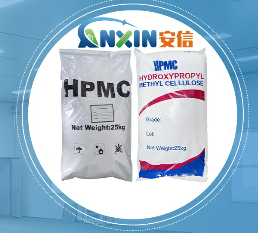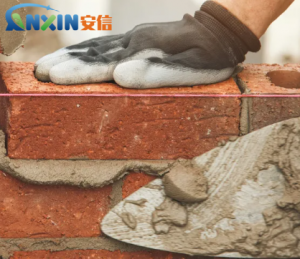In modern construction, mortar performance directly impacts project quality and efficiency. To improve mortar’s water retention, workability, and adhesion, hydroxypropyl methylcellulose (HPMC) is widely used in various dry-mix mortar systems, such as tile adhesives, plaster mortars, self-leveling mortars, and thermal insulation mortars. As a highly efficient water-soluble polymer, HPMC for mortar significantly improves mortar workability through its unique molecular structure and physicochemical properties, making it an indispensable key additive in modern mortar formulations.
1. HPMC exhibits excellent water retention. In mortar systems, HPMC forms a dense polymer film on the surface of cement particles, effectively reducing water loss during mixing, application, and initial setting. This water retention not only ensures sufficient hydration of the cement and increases strength development, but also prevents premature dehydration and cracking caused by excessive water absorption or high temperatures in the base layer. For products like tile adhesives and putty powders that require thin-layer application, HPMC’s water retention is particularly critical, significantly extending open time and adjustment time, improving application tolerance.
2. HPMC can significantly improve the rheological properties and workability of mortar. An appropriate amount of HPMC can enhance the viscoelasticity of the mortar system, imparting excellent lubricity and thixotropy during mixing and application, preventing bleeding and segregation, and ensuring smoother plastering and coating. It also improves the mortar’s anti-slip properties, ensuring that tiles or insulation boards do not slip or shift during application. This rheological control of HPMC allows applicators to easily control mortar thickness and surface smoothness, thereby improving application efficiency and final product quality.
3. HPMC exhibits excellent thickening and stabilizing properties in mortar. Because its polymer chain structure forms a stable colloidal solution in water, HPMC can significantly increase mortar viscosity at low dosages, preventing stratification and settling during storage and application. This not only improves the stability and application consistency of dry-mix mortar, but also helps improve the product’s storability and packaging performance.
4. HPMC also enhances the mortar’s bonding and crack resistance. The polymer film it forms exhibits a certain degree of flexibility and toughness, acting as a bridge after the mortar hardens, reducing microcracks caused by shrinkage stress. Furthermore, it improves the interfacial bond strength between the mortar and the substrate or tile surface, making the finished layer more durable and durable. HPMC’s bond-strengthening effect is particularly significant in exterior wall insulation systems and adhesive mortars.
5. In practical applications, different types of mortar require different HPMC specifications. For example, tile adhesives often use medium-to-high viscosity, slow-release HPMC to ensure anti-slip and water retention, while self-leveling mortars are suited to low-viscosity, fast-dissolving HPMC to maintain fluidity and smooth application. By appropriately selecting viscosity, degree of substitution, and particle morphology, formulators can achieve the optimal balance between water retention, fluidity, and strength.
6. HPMC for mortar, with its unique water-retention, thickening, lubrication, and bonding properties, has become a core functional additive for enhancing the construction performance of dry-mix mortar. It not only optimizes the construction experience but also significantly improves project quality and durability. With the development of green building materials and high-performance mortars, the application of HPMC in building materials will continue to expand, and its technological innovation and product optimization will become important directions for promoting the upgrading of building material performance.
Post time: Oct-09-2025

